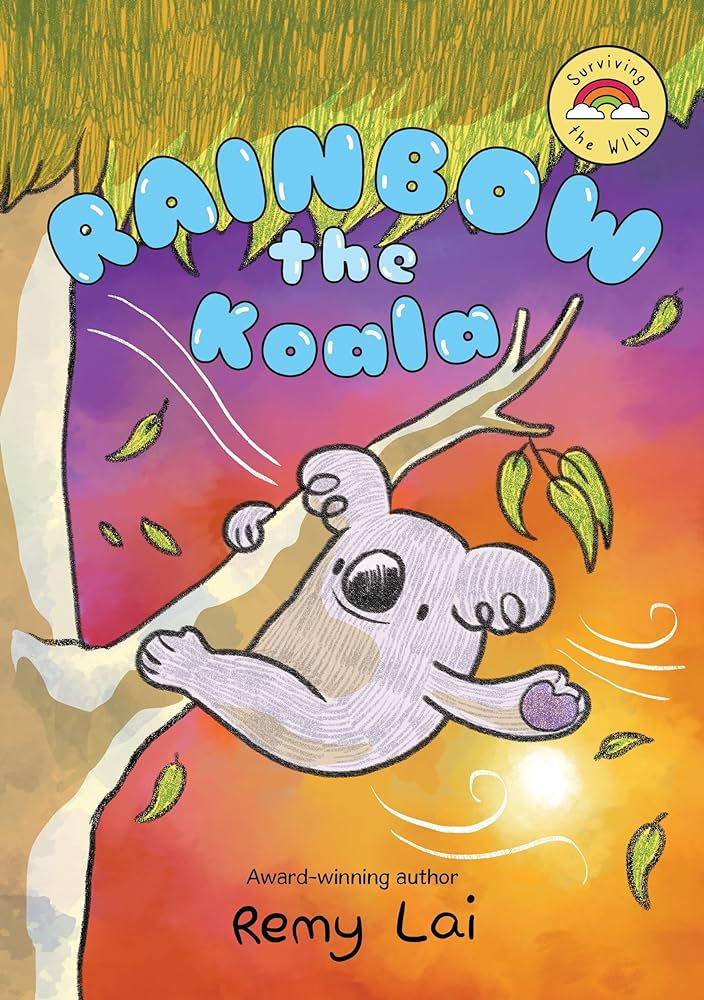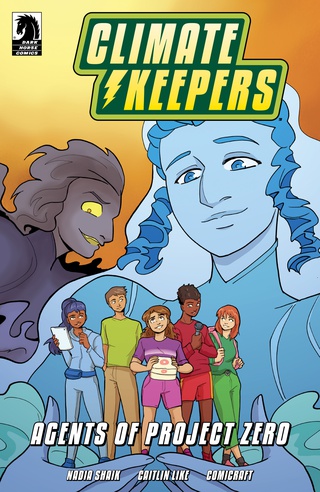“At the start, all creatures were wild pleebos–fur, fin, feather, scales, and squibs alike. Before the Long Rain washed away the Giants-That-Were. But the Giants foresaw their own doom. And in their wisdom gave us, their favored ones, the tools to survive” — Hap, The Underfoot: The Mighty Deep, p. 61.
| Creator(s) | Ben Fisher (author), Emily S. Whitten (author), Michelle Nguyen (illustrator) |
| Publisher | Oni Press |
| Publication Date | 2019 |
| Genre | Post-apocalyptic, Animal Comic, Fiction |
| Environmental Themes and Issues | Apocalypse, Flood, Species Extinction, Anthropomorphism, Habitat Destruction, Animals in Danger, Mutated Organisms, Animal Testing, Hostile Environment, Earthquake, Natural Disaster |
| Protagonist’s Identity | Ruby and Mac: Female, Nonhuman (Animal) protagonists. Anthropomorphic hamsters Both characters are portrayed as disabled. Mac has a speech impediment, and Ruby is noticeably weaker than the other hamsters, though the nature of her disability remains unclear. |
| Protagonist’s Level of Environmental Agency | Level 3: Moderate, Plot-Driven Environmental Agency |
| Target Audience | Middle Grade (8 to 12 years) |
| Settings | Washington, D.C. |
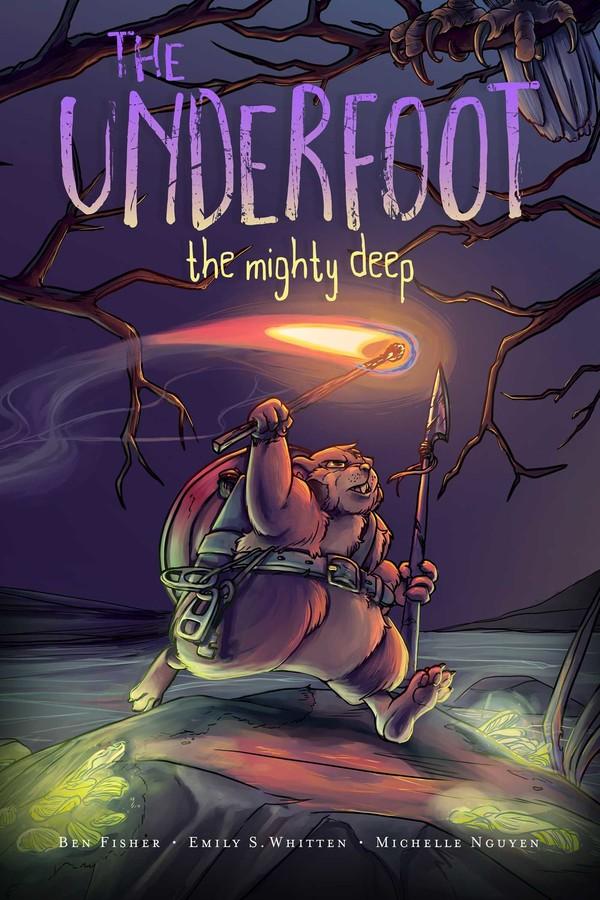
Environmental Themes
The Mighty Deep is the first volume in The Underfoot series. The narrative takes place in a post-apocalyptic future following the extinction of the “The Giants-That-Were,” or humans, during a cataclysmic and mysterious environmental event. Prior to this extinction event, the humans performed science experiments on animals, granting the creatures human intelligence, the power of speech, and other new abilities. The comic centers on one group of animals descended from the results of these science experiments: the members of H.A.M., the Hamster Aquatic Mercenaries. As the name suggests, this group consists of mercenary hamsters who live in a human-created, biofueled hideout and freelance as soldiers to help other intelligent animals fend off threats, such as non-intelligent animals who have been untouched by human experimentation.
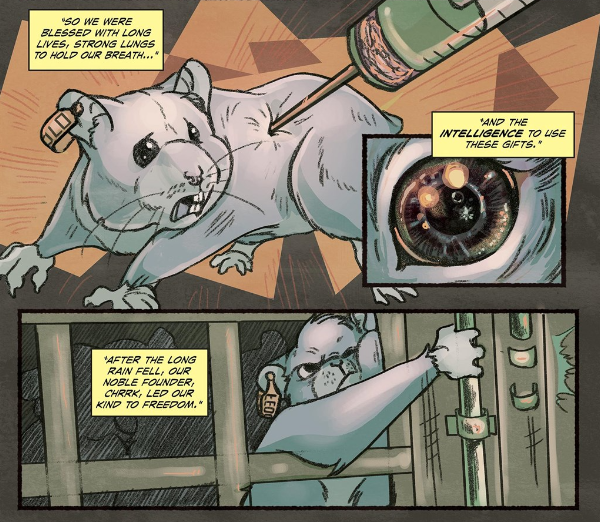
The narrative begins as a badger arrives to seek H.A.M.’s help fighting off beavers who have built a dam upstream of his home, causing dangerous flooding. The hamsters observe that leftover human materials have enabled the beavers to build an unusually destructive dam: “This dam is unusual. It’s reinforced with relics from the Giants-That-Were” (Fisher 16). In order to destroy the dam, the existing H.A.M. team recruits two ambitious hamster pups, Ruby and Mac. Problematically, the creators characterize both of these characters as disabled: Mac has a speech impediment, while Ruby is much physically weaker than the other hamsters. Other members of H.A.M. ridicule the two protagonists for their disabilities, but they eventually allow the girls to join the mission together after implying that they will cancel out each other’s weaknesses.
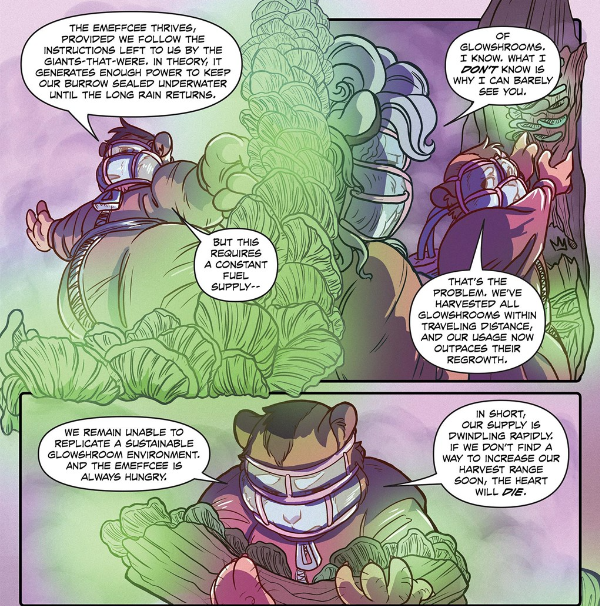
The H.A.M. mission team embarks on their mission to destroy the dam, encountering various talking animals and “pleebos,” or non altered animals, along the way. After defeating hostile snakes and bald eagles, the hamsters arrive at the dam and discover another organized hamster militia: the Hamster Airborne Missionaries. These unfamiliar hamsters have a different origin stories to explain the disappearance of humans. While the Aquatic hamsters believe that the “Long Rain’ wiped out humans, the Airborne hamsters assert that that Giants-That-Were vanished after “mighty tremors tore apart the land” (Fisher 128). Despite their contrasting mythologies, the two hamster groups work together to blow up the dam using explosives. Triumphant, all of the hamsters return together to the H.A.M den.
Meanwhile, the remaining H.A.M. members discover that their biofuel power source–a remnant from humanity–will soon run out as their supply of “glowshrooms” dwindles. Without power, their underground hideaway begins to flood, forcing the hamsters to prepare to evacuate. However, the Airborne hamsters give the group their flying device, which will enable H.A.M. to gather glowshrooms that they were previously unable to access and prevent the destruction of their home. The comic concludes with the two hamster teams forming an alliance to address future environmental threats.
Volume two, The Underfoot: Into the Sun, was published in 2021.
Paratexts
The graphic novel includes a one-page paratext at the conclusion of each of the five chapters. These paratexts include excerpts from documents produced by the scientists who experimented on the animals that provide clues about the environmental issues that led to their demise. For instance, one paratext shows portions of classified documents produced by project H.A.M.S.T.E.R., which apparently sought to produce “genetically modified Syrian hamsters by pronuclear injection” (Fisher 8). Another memo discusses microbial fuel cells, the power source that fuels the hamsters’ home. Other paratexts include profiles of the individual hamster characters, as well as facts about different hamster species. Finally, an advertisement for “Mitch’s Maglocks: Serving the D.C. Area Since 1999” provides the location of the hamsters’ home.
Additional Resources
Harrison, Bob. “Spotlight Interview with the Creators of The Underfoot (Emily Whitten, Ben Fisher, and Michelle Nguyen).” Pop Culture Squad, 3 April 2019. https://popculturesquad.com/2019/04/03/spotlight-interview-with-the-creators-of-the-underfoot-emily-whitten-ben-fisher-and-michelle-nguyen/.


